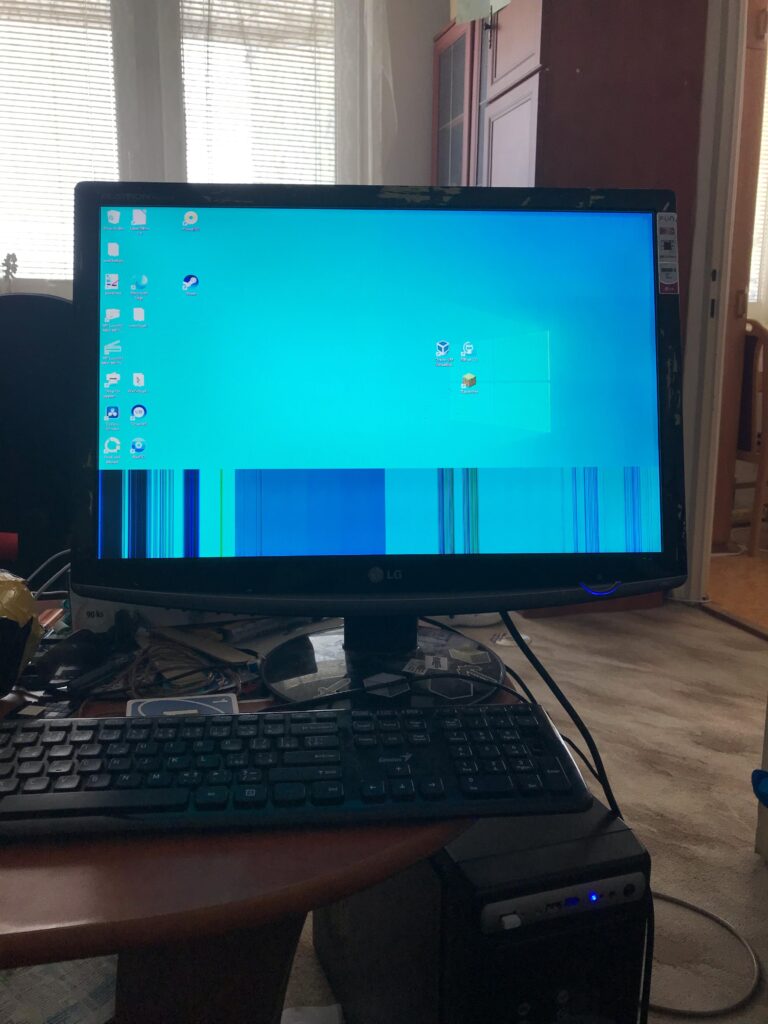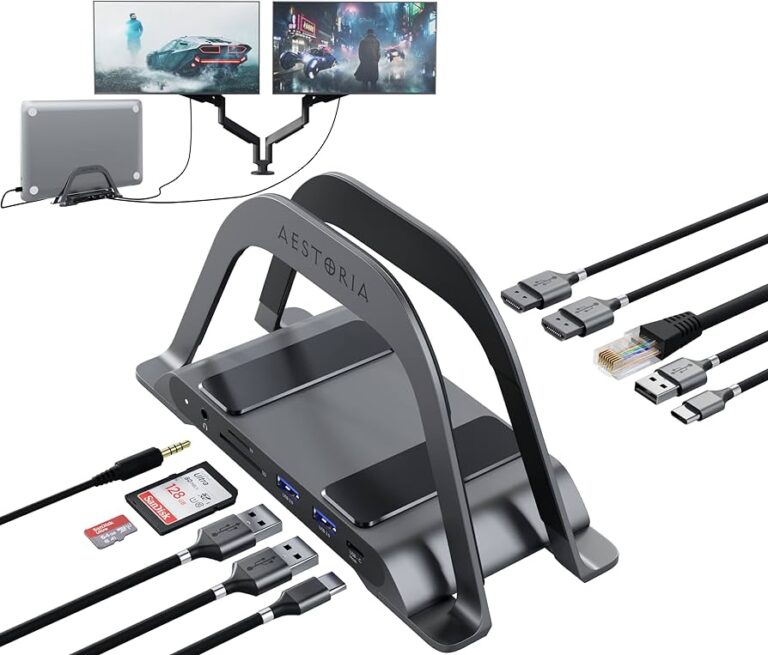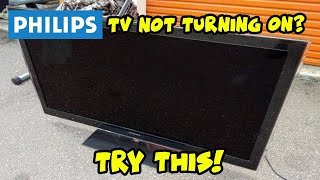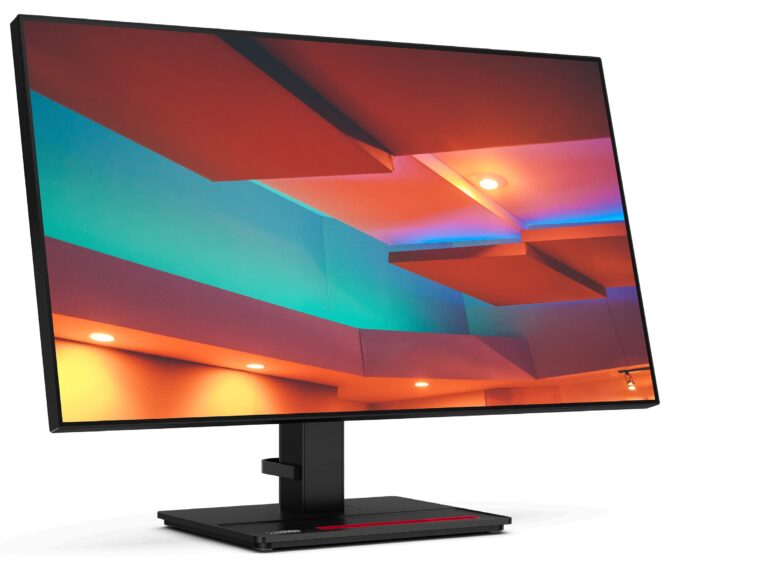Troubleshooting: What to Do If Your Second Monitor is Not Detected
If your second monitor is not being detected, you can try forcing Windows to detect it, check all connections, and reboot your PC. Additionally, you can press the Windows key + i and go to System, then click on Display and scroll down to Multiple screens, click Detect.
Another solution is to make sure your monitor is powered on and connected to your PC correctly. If you’re using a graphics card, ensure that you’re using the correct settings. In some cases, changing the cable connecting the external monitor may fix the issue.
However, if none of these solutions work, you can try reseating the CPU, motherboard, RAM, power supply, or graphics card, or check if the monitor is working properly on another computer.
Confirm Monitor Power And Connections
If your second monitor is not being detected, there are a few steps you can take to troubleshoot the issue. The first thing you need to do is confirm the power and connections of your monitor. Follow the steps below to ensure everything is properly connected:
Ensure The Power Cable Is Connected And The Monitor Is Turned On
Start by checking the power cable of your monitor. Make sure it is securely connected to both the monitor and the power outlet. If the cable is loose, disconnect it and reconnect it firmly. Once the power cable is properly connected, turn on the monitor using the power button located either on the front or side of the monitor.
Verify That The Video Cable Is Properly Connected
Next, check the video cable that connects your monitor to your computer. This can be an HDMI, DVI, DP, or VGA cable. Ensure that one end of the cable is securely plugged into the appropriate port on the back of your monitor. Then, follow the cable to where it connects to your computer and ensure that it is also securely plugged in.
Check For Any Signs Of Damage
In some cases, cables or connection ports may be damaged, which can result in a second monitor not being detected. Take a close look at the cables and connection ports for any signs of physical damage. Check for bent pins, frayed wires, or any other visible signs of wear and tear. If you notice any damage, you may need to replace the cable or seek professional assistance.
By confirming the power and connections of your monitor, you can eliminate any potential issues related to cables or power supply. If your second monitor is still not being detected after following these steps, there may be other underlying issues that need to be addressed.
Troubleshooting Hardware Compatibilities
If your second monitor is not being detected, there are a few troubleshooting steps you can take. Firstly, force Windows to detect it by going into the display settings. Secondly, check all of your connections to ensure they are secure.
Lastly, try rebooting your PC to see if that resolves the issue.
Cross-check Monitor Compatibility With Your System’s Graphics Card Or Integrated Graphics
If your second monitor is not being detected, one possible reason could be compatibility issues between your monitor and your system’s graphics card or integrated graphics. To troubleshoot this, it’s important to cross-check the compatibility of your monitor with your graphics card or integrated graphics. Check the specifications of both your monitor and your graphics card to ensure they are compatible with each other.Test The Monitor With A Different Computer Or Laptop To Ensure It’s Functioning
Another troubleshooting step to consider is testing your monitor with a different computer or laptop to determine if it’s functioning properly. Connect your monitor to a different system and see if it is detected. If it works fine with another computer or laptop, then the issue might be with your original system’s settings or hardware. However, if the monitor is also not detected on another system, it could indicate a problem with the monitor itself.Swap Out The Cables For Known Working Ones To Rule Out Cable Issues
Cable issues can sometimes lead to a second monitor not being detected. To rule out this possibility, try swapping out the cables with known working ones. Replace the HDMI, DisplayPort, DVI, or VGA cable (depending on the connection type your monitor supports) and see if the second monitor gets detected. Sometimes, a faulty cable can prevent proper communication between the monitor and the computer, leading to detection issues.Confirm That The Correct Input Source Is Selected On The Monitor’s Menu
Simple oversights can happen when troubleshooting monitor detection issues. It’s essential to make sure that the correct input source is selected on the monitor’s menu settings. Use the buttons or menu options on the monitor itself to navigate to the input source settings and confirm that the correct one (e.g., HDMI, DisplayPort) is selected. Sometimes, a wrong input source selection can prevent the second monitor from being detected by the computer. By following these troubleshooting steps for hardware compatibility issues, you can increase the chances of resolving the problem when your second monitor is not being detected. Remember to cross-check the compatibility between your monitor and system, test the monitor with a different computer, swap out cables if necessary, and ensure the correct input source is selected on the monitor’s menu.Update And Reinstall Display Drivers
If your second monitor is not being detected, it may be due to outdated or corrupted display drivers. Updating or reinstalling the drivers can often resolve this issue. Here are three methods you can try:
Check For The Latest Updates For Your Graphics Driver And Install Them
In order to ensure your graphics driver is up-to-date, follow these steps:
- Press the Windows key + X and select Device Manager from the menu.
- Expand the Display adapters category.
- Right-click on your graphics driver and select Update driver.
- Choose the option to Search automatically for updated driver software.
- Wait for Windows to search for the latest driver updates and install them.
- Restart your computer to apply the changes.
Uninstall And Reinstall The Graphics Driver Using Device Manager
If updating the driver didn’t help, you can try uninstalling and reinstalling it. Here’s how:
- Open Device Manager by pressing the Windows key + X and selecting it from the menu.
- Expand the Display adapters category.
- Right-click on your graphics driver and select Uninstall device.
- Follow the on-screen instructions to complete the uninstallation process.
- Restart your computer.
- Once your computer restarts, Windows will automatically reinstall the graphics driver.
Explore Using Third-party Software To Find And Update Drivers
If the above methods didn’t resolve the issue, you can consider using third-party software to find and update your drivers. Here’s what you can do:
- Research and select a reputable third-party driver update software.
- Download and install the software.
- Launch the software and follow the on-screen instructions to scan for outdated drivers.
- If the software detects any outdated graphics drivers, select the option to update them.
- Wait for the software to download and install the latest driver updates.
- Restart your computer to apply the changes.
By following these steps, you should be able to update or reinstall your display drivers and resolve the issue of your second monitor not being detected.
Adjust Display Settings On Your Pc
If you are having trouble with your second monitor not being detected, adjusting the display settings on your PC can help resolve the issue. By navigating through the display settings, you can manually detect the monitor, adjust the screen resolution and orientation, and explore advanced settings for multiple monitor configurations. Follow the steps below to troubleshoot and fix any issues:
Walk Through Navigating Display Settings To Detect The Monitor Manually
- Press the Windows key + i to open the Settings on your PC.
- Click on System and then select Display.
- Scroll down to the Multiple screens section and click on Detect.
- If your second monitor is still not detected, try the following steps:
Adjust Screen Resolution And Orientation If The Monitor Is Detected But Not Displaying Correctly
- Go back to the Display settings.
- Scroll down to the Scale and layout section and select Resolution.
- Choose a resolution that is compatible with your second monitor.
- If the display is still not correct, go back to the Display settings and click on Orientation.
- Try toggling between Landscape and Portrait to see if the display improves.
Explore Advanced Display Settings For Multiple Monitor Configurations
If you are using multiple monitors, you may need to adjust the advanced display settings for optimal configuration. Here’s how:
- Go back to the Display settings.
- Scroll down to the Multiple screens section and click on Advanced display settings.
- Here, you can choose how your monitors are arranged, set the primary display, and adjust the resolution for each monitor individually.
- Make sure that all the necessary settings are correctly configured for your multiple monitor setup.
By following these steps and adjusting the display settings on your PC, you should be able to resolve any issues with your second monitor not being detected. Troubleshooting and configuring your displays correctly will ensure a seamless multi-monitor experience.
Diagnose With System Tools
If your second monitor is not detected, there are several steps you can take to troubleshoot the issue. First, make sure all connections are secure and reboot your PC. You can also force Windows to detect the monitor and check your display settings.
If none of these options work, try changing the cable connecting the monitor or removing other unnecessary peripherals.
Utilize The Built-in Windows Troubleshooters For Hardware And Devices
If your second monitor is not being detected, you can make use of the built-in Windows troubleshooters specifically designed to diagnose hardware and devices. These troubleshooters can help identify and resolve any issues that may be preventing your second monitor from being detected. To access the troubleshooters in Windows, you can follow these steps:- Click on the Start button and navigate to the Settings option.
- Within the Settings menu, click on System.
- Scroll down and click on Display.
- Under the Multiple screens section, click on the Detect button.
Dive Into Event Viewer To Identify Any Related Error Messages Or Warnings
Another useful tool for diagnosing the issue with your second monitor is the Event Viewer. The Event Viewer provides a detailed log of all events occurring on your system, including error messages or warnings related to hardware devices. To access the Event Viewer, you can use the following steps:- Press the Windows key on your keyboard and type Event Viewer.
- Click on the Event Viewer option that appears.
- In the Event Viewer window, navigate to Windows Logs on the left-hand side.
- Click on System within the Windows Logs section.
- Look for any error messages or warnings that are related to your second monitor not being detected.
Use Third-party Diagnostic Tools For More Thorough Hardware Checks
If the built-in Windows troubleshooters and Event Viewer do not yield any conclusive results, you may want to consider using third-party diagnostic tools for more comprehensive hardware checks. These tools can provide a more in-depth analysis of your system and help identify any underlying issues that may be affecting the detection of your second monitor. Some popular third-party diagnostic tools include:| Name | Description |
|---|---|
| Speccy | A comprehensive system information tool that provides detailed information about your hardware components. |
| HWiNFO | An advanced hardware monitoring and diagnostic tool that provides real-time information about your system components. |
| GPU-Z | A graphics card information and monitoring utility that can help diagnose issues related to graphics card detection. |
Consider Bios And Firmware Updates
If your second monitor is not being detected, there are a few steps you can take to fix the issue. First, double-check all of your connections to ensure they are secure. Next, you can try forcing Windows to detect the monitor.
If these steps don’t work, you may need to change the cable connecting the external monitor or check your display settings.
If your second monitor is not being detected, one potential solution is to consider updating the BIOS and firmware of your system. These updates can address compatibility issues and improve the overall performance of your computer and monitor.
Guide On How To Check And Update The System Bios, If Applicable
To check and update the system BIOS, follow the steps below:
- Start by restarting your computer.
- During the startup process, look for a message that prompts you to enter the BIOS settings. This message may vary depending on your computer manufacturer and model.
- Press the indicated key to enter the BIOS settings. Common keys include F2, F10, or Delete.
- Once in the BIOS settings, navigate to the section that allows you to update the BIOS.
- Check your computer manufacturer’s website for the latest BIOS version available for your specific model.
- If a newer version is available, download it and follow the manufacturer’s instructions to update the BIOS.
- After updating the BIOS, save the changes and exit the BIOS settings. Your computer will restart.
Check For Firmware Updates For The Monitor Itself From The Manufacturer
In addition to updating the system BIOS, it is also important to check for firmware updates specifically for your monitor. Here’s how you can do it:
- Visit the website of your monitor’s manufacturer.
- Look for the support or downloads section of the website.
- Search for your specific monitor model.
- If a firmware update is available, download it according to the manufacturer’s instructions.
- Follow the provided steps to install the firmware update on your monitor.
- Once the update is complete, restart your computer and check if the second monitor is now detected.
By considering BIOS and firmware updates, you can potentially resolve issues with your second monitor not being detected. These updates ensure compatibility and can improve the functionality of your computer and monitor.
Alternative Fixes And When To Seek Help
If your second monitor is not being detected, try forcing Windows to detect it, check all of your connections, and reboot your PC. You can also try changing the cable connecting the monitor or disconnecting any unnecessary peripherals. If none of these solutions work, there may be an issue with your CPU, motherboard, RAM, power supply, or graphics card.
Suggest Potential Bios Setting Adjustments Or Enabling/disabling Specific Features
If your second monitor is not being detected, one of the potential solutions is to make adjustments to your computer’s BIOS settings. The BIOS, or Basic Input/Output System, controls the hardware initialization process when your computer starts up. By accessing the BIOS settings, you can enable or disable specific features that may affect the detection of your second monitor. To make BIOS adjustments, follow these steps: 1. Restart your computer and press the designated key (usually Del, F2, or Esc) to enter the BIOS menu. 2. Navigate through the BIOS settings using the arrow keys on your keyboard. 3. Look for options related to graphics or display settings. 4. Enable or disable relevant features that may impact the detection of your second monitor. 5. Save your changes and exit the BIOS settings. If making changes to the BIOS settings does not resolve the issue, you may need to explore other potential solutions.Discuss The Potential Need For Hardware Replacement – Graphics Card Or Monitor
If your second monitor is still not detected after trying the previous solutions, there may be an issue with your hardware. Specifically, the graphics card or the monitor itself could be the problem. Here are some steps to consider: 1. Check the connections between the graphics card and the monitor. Ensure that all cables are securely connected and not damaged. 2. Try connecting the second monitor to a different computer to see if it is recognized. This will help determine if the issue lies with the monitor or the computer’s graphics card. 3. If the second monitor works on another computer, it could indicate a problem with your computer’s graphics card. Consider testing with a different graphics card to confirm the issue. 4. Alternatively, if the second monitor is not recognized on any computer, it is likely a problem with the monitor itself. In this case, you may need to replace the monitor or seek professional repairs.Recommendations For Professional Computer Repair Services Or Manufacturer Support
If you have exhausted all the alternative fixes mentioned above and your second monitor is still not being detected, it may be time to seek professional help. There are two main options to consider: professional computer repair services or manufacturer support. Professional computer repair services can provide expertise in diagnosing and fixing hardware-related issues. They have the necessary experience and tools to identify the root cause of the problem and recommend appropriate solutions. Look for reputable computer repair companies in your area and consider reading reviews or seeking recommendations from others who have had similar issues. On the other hand, if your computer or monitor is still covered by warranty, it is worth reaching out to the manufacturer for support. They may offer troubleshooting assistance or even provide a replacement if the issue is determined to be a manufacturing defect. Remember, seeking professional help can save you time and frustration, especially if you lack technical knowledge or experience. It is important to weigh the cost of repairs or replacements against the value and usefulness of your second monitor before making a decision. Overall, troubleshooting and trying alternative fixes should be your first approach when your second monitor is not detected. However, if those options fail, exploring hardware replacements or seeking professional assistance can ultimately resolve the issue and get your dual-monitor setup working again.Frequently Asked Questions On What To Do If Your Second Monitor Is Not Detected
Why Is My Second Monitor Not Getting A Signal?
If your second monitor is not getting a signal, first, ensure that the cable connections are secure. Try unplugging and plugging them in again. Additionally, disconnect any unnecessary devices. If these steps don’t work, try changing the cable or updating graphic drivers.
You can also check the display settings and try forcing Windows to detect the monitor.
How Do I Get My Second Monitor To Show Up?
To get your second monitor to show up, follow these steps: 1. Check all cable connections and ensure they are properly secured. 2. Reboot your computer. 3. Press the Windows key + P to select a display option. 4. Go to Start > Settings > System > Display to check if the monitors are detected.
5. If none of these steps work, try using different cables or connecting the monitor to another computer to troubleshoot.
Why Is My Monitor Not Displaying?
If your monitor is not displaying, here are some steps to try: 1. Check all connections and make sure your monitor is powered on. 2. If using a graphics card, ensure you’re using the correct one. 3. Force Windows to detect your monitor by pressing Windows key + i, going to System, clicking Display, and selecting Detect.
4. Try changing the cable connecting the external monitor. 5. Verify cable connections and remove unnecessary peripherals. 6. Check if the issue is with the CPU, motherboard, RAM, power supply, or graphics card by reseating or testing them in another computer.
7. Check for faulty cables, outdated drivers, or wrong resolution settings. If none of these steps work, further troubleshooting may be needed.
Why Is My Second Monitor Black?
If your second monitor is black, try these troubleshooting steps: – Check all connections and cables – Restart your computer – Force Windows to detect the monitor – Ensure the monitor is powered on – Make sure the correct graphics card is being used – Update your graphic drivers – Verify resolution settings.
If none of these solutions work, you may need to seek further assistance.
Conclusion
If you’re facing the issue of your second monitor not being detected, there are several steps you can take to troubleshoot and find a solution. First, ensure all connections are secure and restart your computer. If this doesn’t work, force Windows to detect the monitor and check your display settings.
If the problem persists, try using a different cable or checking for updates on your graphics card. If none of these steps work, it may be helpful to seek assistance from online forums or tech support communities for further guidance.




